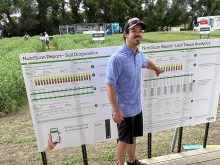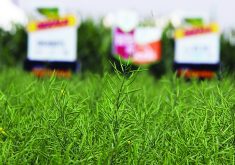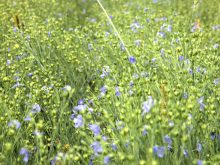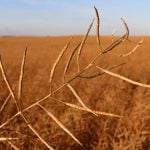Experiment with inputs and application rates instead of waiting for scientists and agronomists to conduct trials, says specialist
Prairie wheat growers are missing an opportunity.
New wheat varieties have significantly higher yield potential, but tapping into that potential requires new knowledge and new agronomic practices, says an Ontario cereal specialist.
Experimentation and on-farm trials have taught Ontario farmers how to harness the potential of modern wheat varieties and in-creased soft winter wheat yields by 15 to 20 bushels per acre in the last several years.
Spring wheat growers in Western Canada could duplicate Ontario’s success, but getting there will require on-farm research, said Peter Johnson of Ontario’s agriculture ministry.
Read Also

Lower nitrogen rates in dry beans could pay off for farmers
Manitoba research is testing whether reduced nitrogen fertilizer in dry beans can maintain yields while cutting costs and lowering greenhouse gas emissions.
“Look at how your (wheat) genetics have improved. You guys should be blowing the doors off yield,” Johnson told the Manitoba Agronomy Conference in Winnipeg in mid-December.
“If you don’t have the genetics, it doesn’t work. I think you now have the genetics.”
Johnson said farmers are too reliant on scientists and experts for agronomic breakthroughs. He said growers should do their own experiments and share the information with other producers.
“Now that you guys have auto-steer and tramlines, you can do this re-search on your farm,” he said.
“And you can move the bar forward for yourself, long before the researchers ever catch up.”
Johnson and 20 Ontario farmers began experimenting with higher nitrogen rates and multiple fungicide applications on soft winter wheat in 2008.
He had heard there might be a synergy between increased nitrogen and an additional fungicide application, but he was skeptical because Ontario data showed no yield gains in winter wheat from adding more than 90 pounds per acre of nitrogen.
The results proved Johnson wrong. Winter wheat plots that received 150 lb. of nitrogen and two treatments of fungicide generated substantially higher yields than plots with 90 lb. of nitrogen and no fungicide.
“At 20 sites in 2008, we picked up 21 bu. per acre (on average),” he said.
Johnson and producers repeated the experiment in 2009 and 2010 and achieved similar results.
Johnson said the research has changed winter wheat production in Ontario. It’s now normal to use higher rates of nitrogen and apply more than one fungicide treatment.
“All my best wheat producers follow that production package,” he said.
“The farmers have picked it up. It’s real and it works.”
Ontario wheat growers followed the advice partly because of the results but also because farmers participated in the research.
Johnson said one farmer left the study after two years because he had seen enough evidence.
“He learned on his own farm with his own varieties that this synergy is real and it was bringing him 18 to 20 bu. (more),” he said. “That’s where the rubber really hits the road.”
That sort of on-farm research, collaboration and data sharing is common in Ontario but is sorely lacking in the West, said John Heard, a soil fertility specialist with Manitoba Agriculture.
“We don’t have an Ontario Soil and Crop Improvement Association in Western Canada. That is the farmer association that is behind the Ontario effort,” he said.
“Farmers have been pooling test data and sharing results for years (in Ontario).”
Heard said the on-farm data from Ontario is powerful because it’s field scale, replicated and randomized.
“So each (site) on its own is good, but the big value is in pooling what other farmers are doing.”
The Manitoba Pulse Growers Association has been running an on-farm research program since 2010, but other commodity groups haven’t followed its lead.
“I think what the pulse growers are doing is a great thing,” Heard said, but other associations “aren’t doing proper on-farm tests and pooling data.”
He said this is an ideal time for farmers to evaluate agronomic practices for wheat because some of the existing fertility recommendations aren’t relevant for the new, higher yielding varieties.
Johnson said farmers around the world are tapping into wheat’s yield potential. A New Zealand farmer set the world record in 2010 with a 232 bu. crop.
Johnson said it’s impossible to know what Ontario wheat producers will discover next to boost wheat yields, but that’s why agronomic research is conducted.
“You just have to keep looking. We just sort of fell into this nitrogen/fungicide thing,” he said.
“It’s serendipitous. Generally the big breakthrough is serendipitous. It’s not planned.”
















